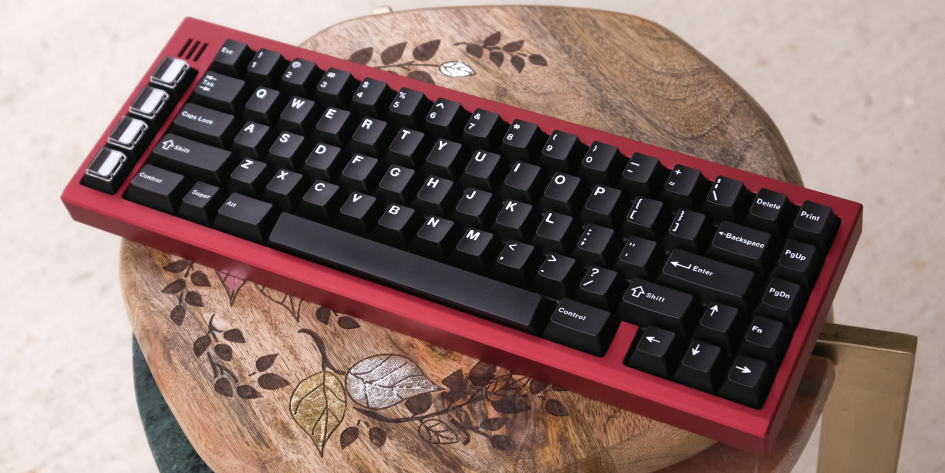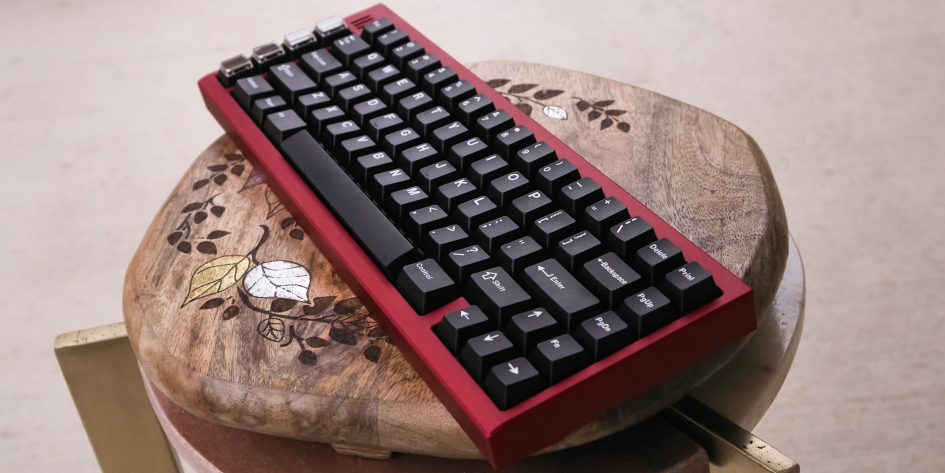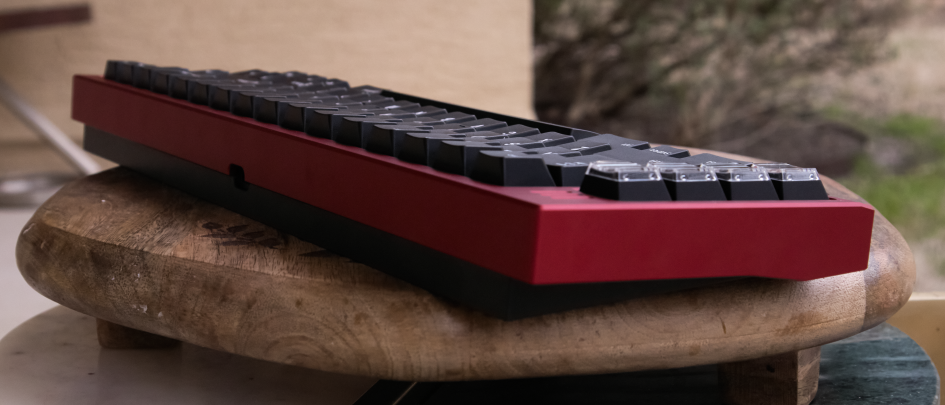
Typ65+ with Linworks WoB
Axiom Studios Typ65+
- Received: January 20th, 2024
- Sold: February 17th, 2024
- Weight (built): 1624g / 3 lb 9 oz
Summary
The Typ65+ by Axiom Studios is a masterclass in design aesthetics and functionality. When I first saw TaeKeyboards’ Review I was infatuated by the design aesthetics and potential functionality of this board. At the time I was more of a 65% / 75% form factor enjoyer and hadn’t fully divorced my need for dedicated arrow keys. The design of this board is truly stunning and the red anodization is the perfect shade for my liking. I also greatly appreciated the usage of the two toned design with the black lower chassis perfectly complimenting the red top piece. In terms of looks, this board was a killer.
Deep Deep Sound
When I first got my hands on this board and assembled it my first impression of the board was “wow this is beautiful” and “wow this is deep.” I’m not entirely sure what specifically causes this board to have such a thuddy and loud sound signature considering that I was using a carbon fiber plate, but I knew that the Cherry-Burgundy switches I initially tried weren’t quite the best match. I later swapped them out with some Zakus and they were a much better match.
Flex-cut Pains
Despite the boomy sound signature of the board, the alphas in its stock configuration left a little to be desired. I suspected that the single long flex cut just above Row 1 on the alphas was contributing to a thinner sound signature, and my theory was later proven right because after using a thin piece of poron foam to plug up that single flex cut, the sound of the alphas were improved and had a much fuller sound signature.
The Layout
Despite how happy I was with this board, there were a couple of quirks that made it apparent to me that I was not going to get used to typing on it. As much as I love the looks of this layout, my hands have already gotten used to typing on 60% keyboards and I still daily drive my Sharkeneko. I already had a perfectly functional layout for me, and switching back and forth between the two only lead to more problems. I found myself never using the navigation keys, nor the macro column, and the placement of the arrow keys was just a bit too awkward to get used to. The macro keys were also making it difficult for my hands to find their place. I would often find myself accidentally hitting the macro keys instead and losing my place on the left side of the keyboard. At this point I had become solemnly sworn to 60% keyboards and so my interest in using this board waned quickly.
Parts
- Case: black and red anodized aluminum
- Configuration:
- Gasket mounted
- Poron piece to plug up the plate and pcb flex cut
- Vinyl shelf liner in lower case
- Plate: carbon fiber
- PCB: Mill-maxed solder for split backspace
- Stabilizers: TX Stabilizers Rev.3
- Switches: Tecsee Zaku with Cannonkeys 58g 21mm Long Springs
Photoshoot






